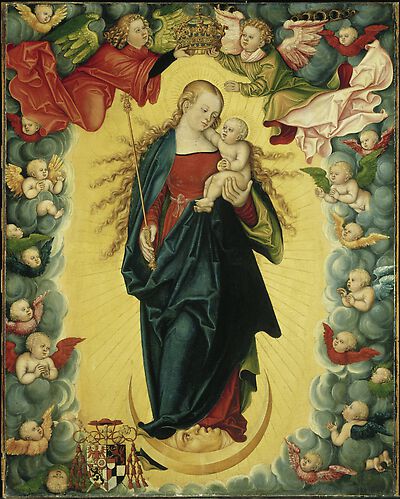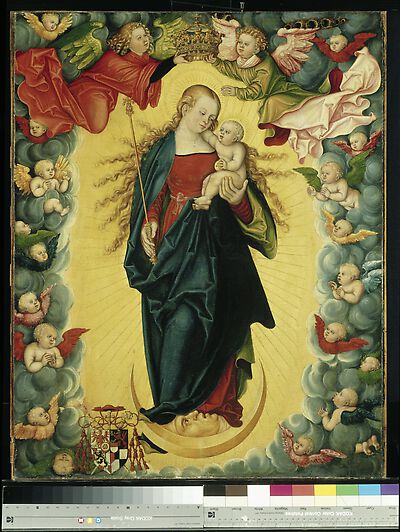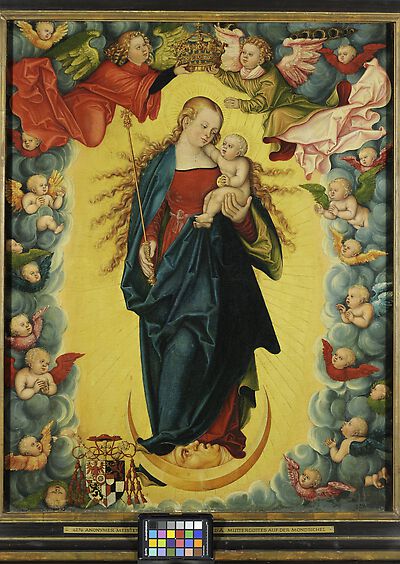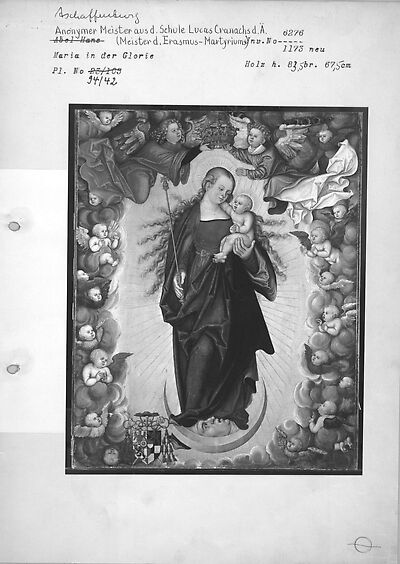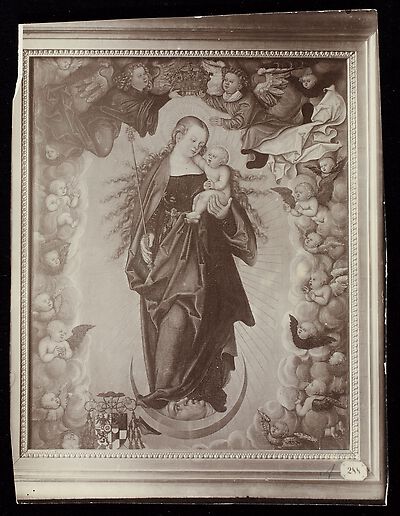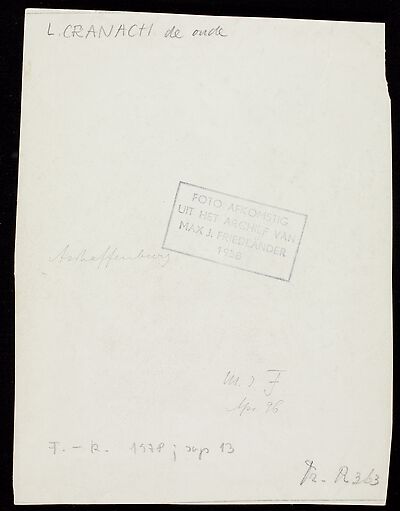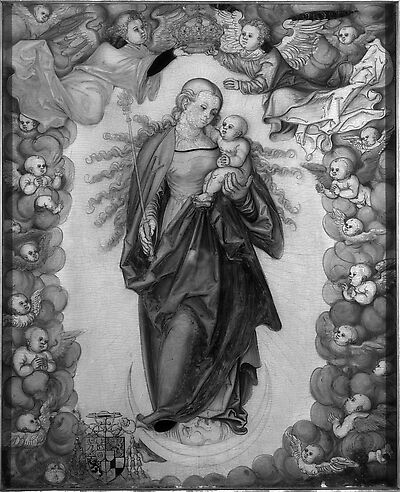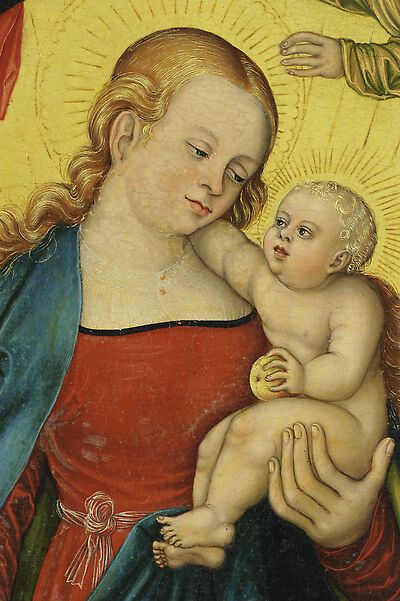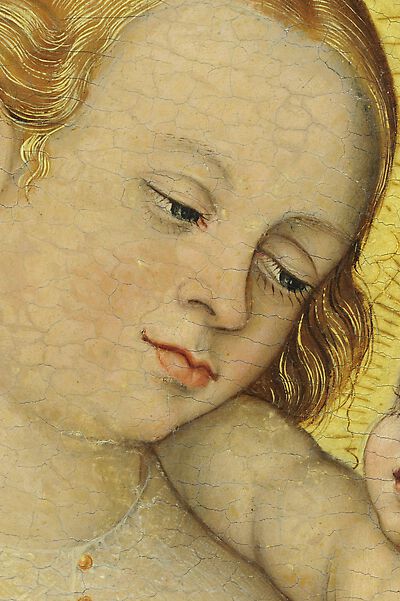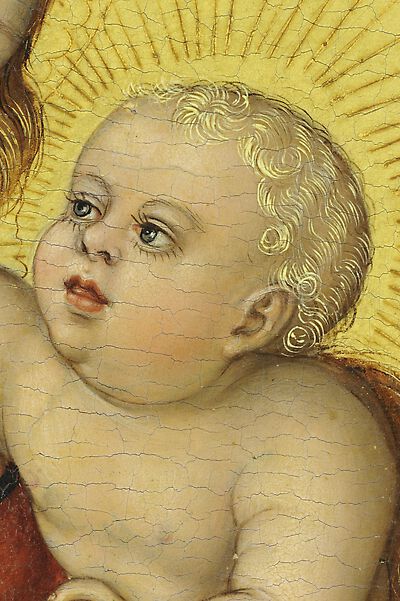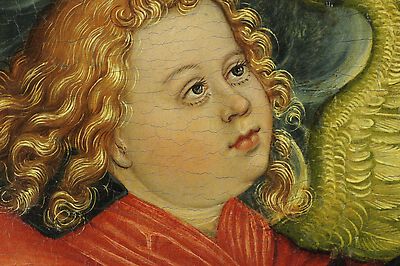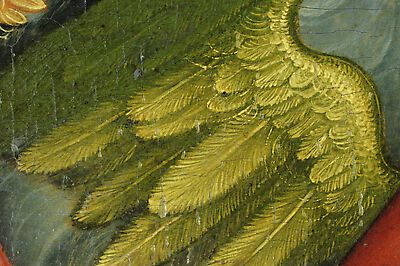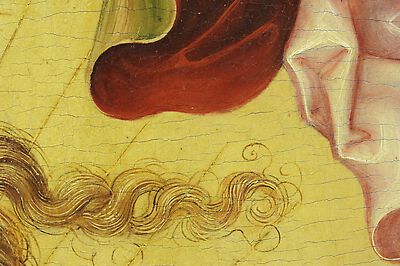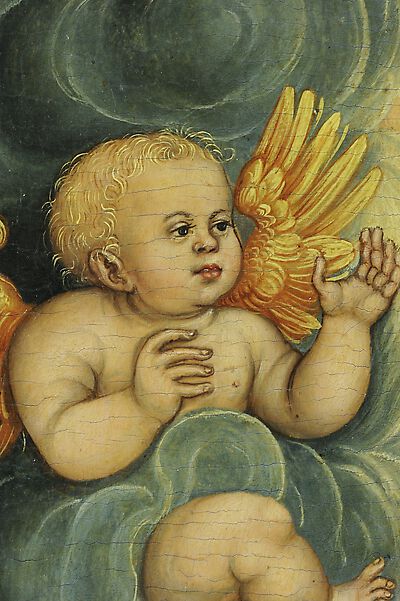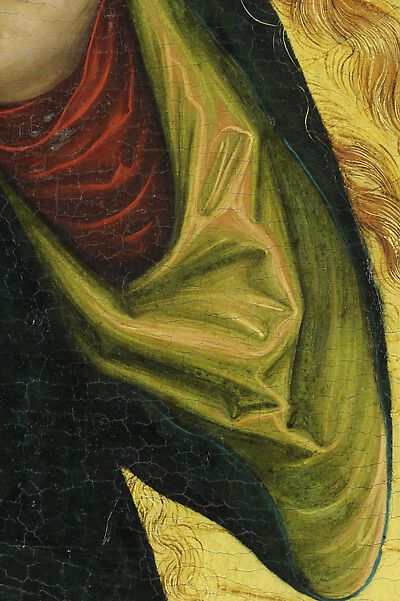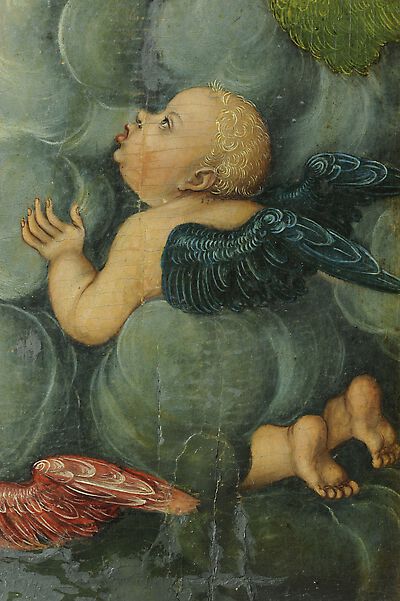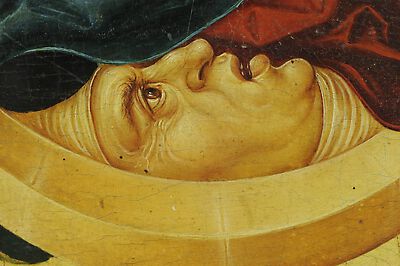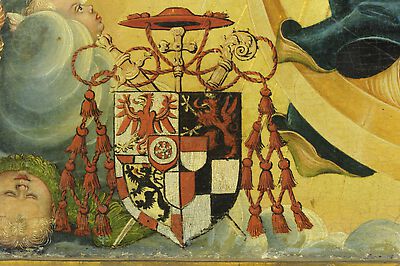In the 'Virgin on a Crescent Moon' two pictorial types are combined: the Virgin standing with the Child and the apocalyptical motif of the 'woman clothed with the sun' (Rev 12 1). It is linked to thoughts about the Immaculate Conception and the Assumption of the Virgin; the motif can
In the 'Virgin on a Crescent Moon' two pictorial types are combined: the Virgin standing with the Child and the apocalyptical motif of the 'woman clothed with the sun' (Rev 12 1). It is linked to thoughts about the Immaculate Conception and the Assumption of the Virgin; the motif can also be interpreted as a symbol of the church (Maria-Ekklesia), and appeared in medieval painting and - more frequently- sculpture. Corresponding interpretations of the Vision of St John have evolved in theology since the time of the Church Fathers.
The Virgin is depicted here with an insignia, a scepter and a crown, identifying her as the Queen of Heaven. Angels and cherubs surround her. The infant Christ in her arms holds an apple, symbolic of the eradication of Original Sin, which was introduced by Adam and Eve. The characteristic motif of the 'old' Faith from the beginning of the Reformation is evident in the concentration of meaning and the central position occupied by the Mother of Jesus; it is not entirely coincidental that the motif experienced a revival during the Counterreformation after the Council of Trent; and frequently with a decidedly anti-reformist message.
[...] his [Albrecht of Brandenburg] shield (four span with the three central coats-of-arms of the dioceses Mainz, Halberstadt, Magdeburg). In addition to the insignia of a cardinal there is also a sword, which Albrecht received from Emperor Maximilian I. on the occasion of his ordination in 1518. [...]
The source of inspiration for the artist may have been engravings by Albrecht Dürer, in which the motif often appears.'
[Exhib. Cat. Aschaffenburg 2007, 274]
